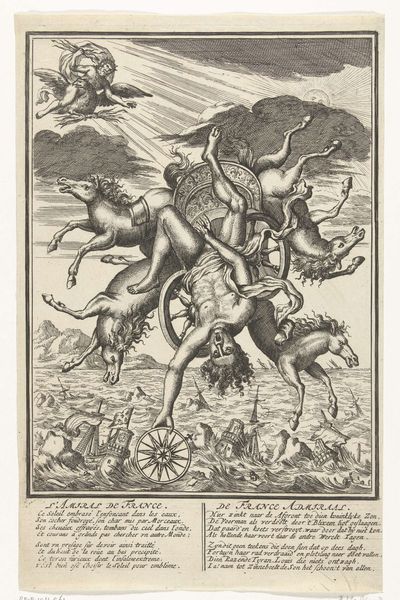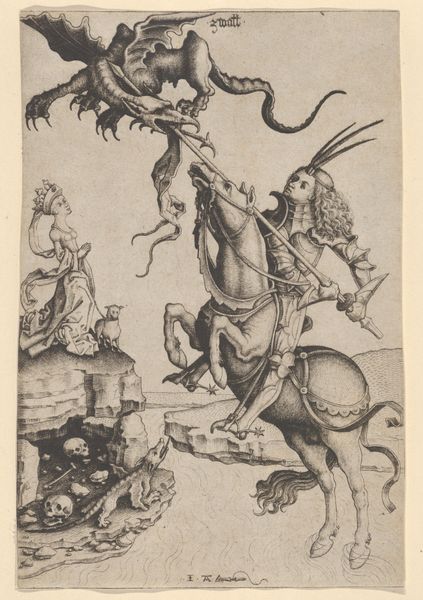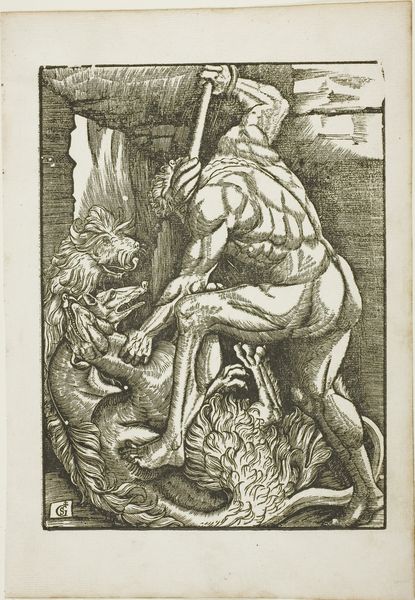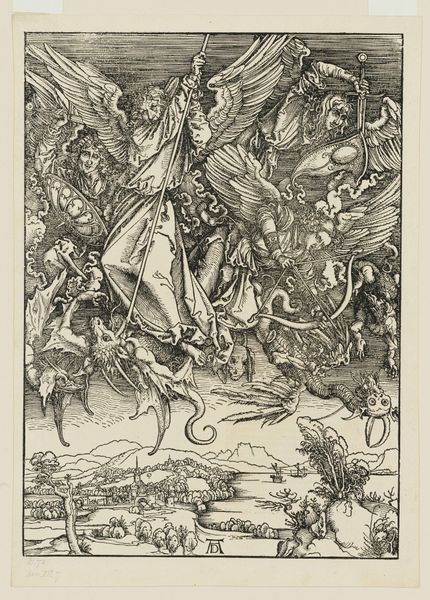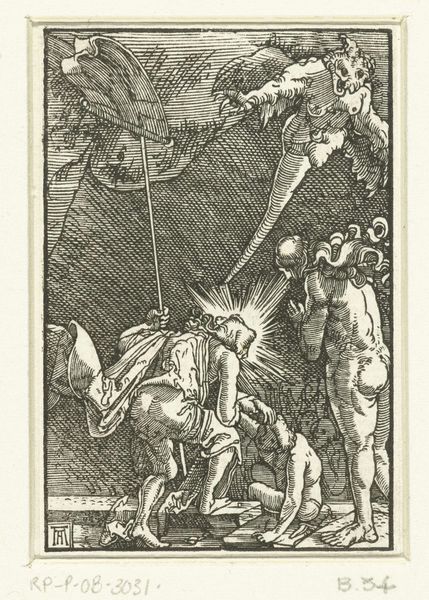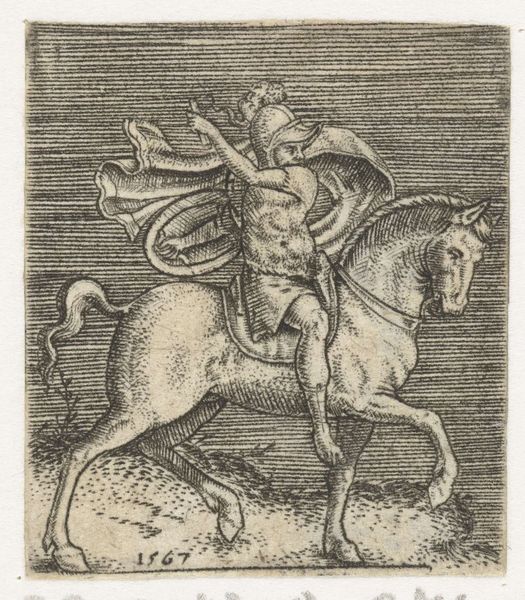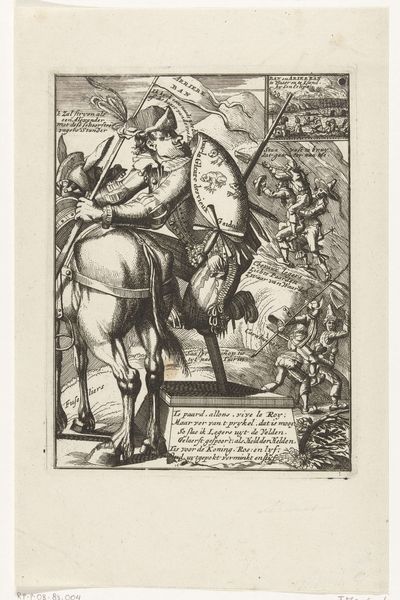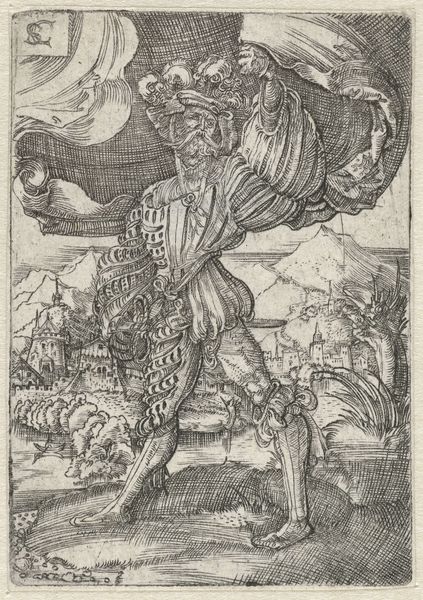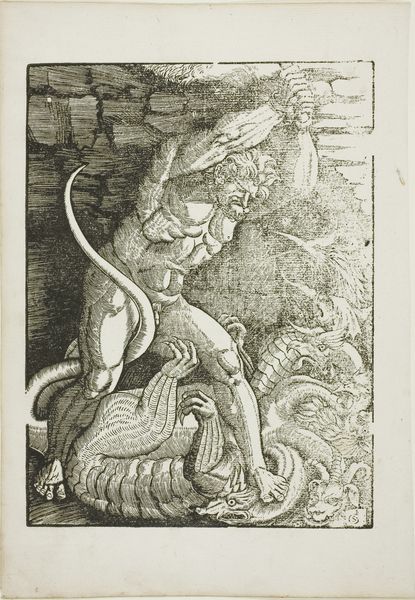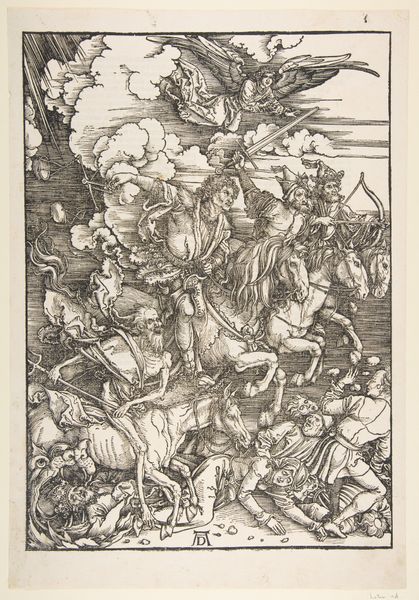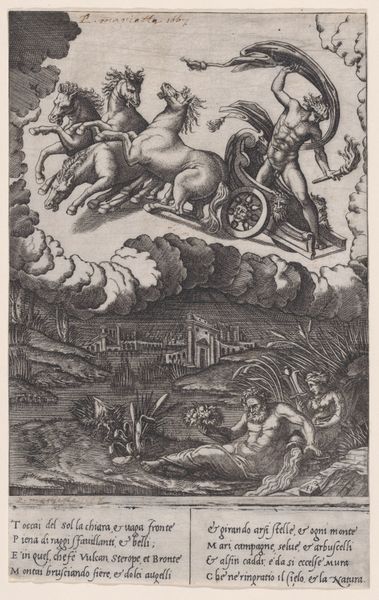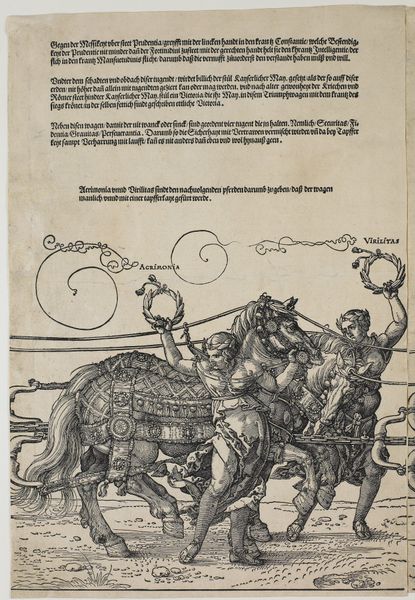
print, etching
#
allegory
# print
#
etching
#
history-painting
Dimensions: 232 mm (height) x 199 mm (width) (bladmaal)
Curator: Look at this etching by Melchior Lorck from 1545. It’s called "The Pope as a savage. Satirical allegory." What’s your initial impression? Editor: Woah! Utter chaos. The scale is incredible, especially considering it's a print. I'm drawn to the textures; the whole creature looks like it's made of densely packed… fur? And there are these tiny figures swirling around him in what seems to be smoke. Curator: Fur might not be far off; the figure embodies savage, almost bestial traits. The etching acts as political commentary. It attempts to illustrate Luther’s criticisms of the papacy through the form of monstrous allegory. Note the inscription in old German above and below, furthering this notion. Editor: Ah, the context clarifies so much. It’s a powerful, visceral attack, crafted through careful detail and texture. But it seems to rely heavily on specific religious beliefs. Would someone without that background understand the intensity of it? What was his etching process like? And would the plates wear down quickly with this much meticulous detailing? Curator: A very good question! The physical act of creating prints, like etching, allowed these critical ideas to disseminate widely and quickly—challenging the very notion of controlled messaging by the church. Each pull would have maintained surprising detail but required meticulous inking and pressing, an iterative process. This piece reflects the era's debates around not just content, but about access, the power of reproduction, and its democratizing effect on thought. Editor: So it is like early propaganda in a sense. That gives it another layer; you consider the labor involved to churn these out and get them in people’s hands…literally changing their perspective through mass production. Curator: Precisely. And with its rich allegory and meticulous detailing, “The Pope as a Savage” reflects a tumultuous intersection of politics, religion, and rapidly evolving methods of communication. It sparks critical thought about religious power, social hierarchy, and access to it. Editor: And on how ideas themselves take shape materially—and gain potency in circulation. I was all set on seeing this work as just the fantastical depiction of chaos. It's certainly more than that!
Comments
No comments
Be the first to comment and join the conversation on the ultimate creative platform.

